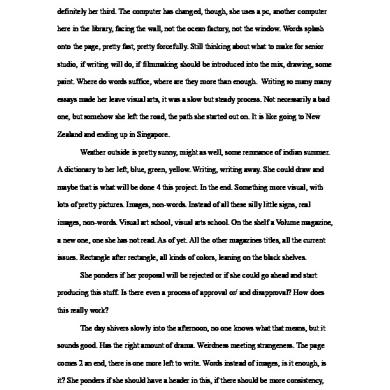2+ +3+introduction+to+organizational+behavior
This document was uploaded by user and they confirmed that they have the permission to share it. If you are author or own the copyright of this book, please report to us by using this DMCA report form. Report DMCA
Overview
Download & View 2+ +3+introduction+to+organizational+behavior as PDF for free.
More details
- Words: 246
- Pages: 11
Introduction to Organizational Behavior
What is OB?
“The understanding, prediction & management of human behavior in organizations”
Value of OB “Helps people attain the competencies needed to become effective employees, team leaders/members, or managers” Competencies
Managing Self Managing Communication Managing Diversity Managing Ethics Managing Across Cultures Managing Teams Managing Change
Key points • • • •
OB deals with human behavior Humanistic orientation Interdisciplinary Performance Oriented
Contributions to the Study of OB Discipline
Unit of Analysis
Output
Psychology Individual Sociology Social Psychology
Group
Anthropology Organization Political Science
Organizational Behavior
Understanding OB Organizational effectiveness Group effectiveness Individual effectiveness
Power Politics, Conflict, Structure, Change
Group Behavior, Work Teams, Communication
Learning, Perception, Personality, Motivation, Stress, Leadership
Individual Behavior Feelings of worth can flourish only in an atmosphere where individual differences are appreciated, mistakes are tolerated, communication is open, and rules are flexible -- the kind of atmosphere that is found in a nurturing family.
Individual Behavior • • •
Individuals are different Factors shaping individual behavior – Physiological/ Psychological Individual characteristics influence work behavior
Personality
Values
Perceptions
Criteria for performance
Attitudes
Ability + Motivation + Opportunity/ Resources
Individual Performance
Y = f (X) Dependent Variable
Independent Variable
Productivity Absenteeism Turnover Job Satisfaction
Biographical char. Ability Personality Learning
Individual differences Biographical Characteristics • Age • Gender • Marital Status • Number of dependents • Tenure/ Work experience
Individual differences Ability • Intellectual Abilities
Numerical aptitude, Verbal comprehension, Reasoning, Spatial visualization, Memory ability
• Physical Abilities The Ability – Job fit
What is OB?
“The understanding, prediction & management of human behavior in organizations”
Value of OB “Helps people attain the competencies needed to become effective employees, team leaders/members, or managers” Competencies
Managing Self Managing Communication Managing Diversity Managing Ethics Managing Across Cultures Managing Teams Managing Change
Key points • • • •
OB deals with human behavior Humanistic orientation Interdisciplinary Performance Oriented
Contributions to the Study of OB Discipline
Unit of Analysis
Output
Psychology Individual Sociology Social Psychology
Group
Anthropology Organization Political Science
Organizational Behavior
Understanding OB Organizational effectiveness Group effectiveness Individual effectiveness
Power Politics, Conflict, Structure, Change
Group Behavior, Work Teams, Communication
Learning, Perception, Personality, Motivation, Stress, Leadership
Individual Behavior Feelings of worth can flourish only in an atmosphere where individual differences are appreciated, mistakes are tolerated, communication is open, and rules are flexible -- the kind of atmosphere that is found in a nurturing family.
Individual Behavior • • •
Individuals are different Factors shaping individual behavior – Physiological/ Psychological Individual characteristics influence work behavior
Personality
Values
Perceptions
Criteria for performance
Attitudes
Ability + Motivation + Opportunity/ Resources
Individual Performance
Y = f (X) Dependent Variable
Independent Variable
Productivity Absenteeism Turnover Job Satisfaction
Biographical char. Ability Personality Learning
Individual differences Biographical Characteristics • Age • Gender • Marital Status • Number of dependents • Tenure/ Work experience
Individual differences Ability • Intellectual Abilities
Numerical aptitude, Verbal comprehension, Reasoning, Spatial visualization, Memory ability
• Physical Abilities The Ability – Job fit
Related Documents

Seniorstudio 2(2)(2)
June 2020 80
Seniorstudio 2(2)(2)
June 2020 86
Seniorstudio 2(2)(2)
June 2020 77
2-2
November 2019 81
2-2
May 2020 54